When I reviewed the new medium-format GFX100RF, I was waiting for the arrival of the Haoge thumb grip. Fitting a thumb grip to the RF is not easy because of the new vertical aspect ratio dial and, but as it turns out, the Haoge grip is a perfect choice.
Furthermore, my experiences with the RF, particularly in using film simulations, has persuaded me to take a fresh look at the X100VI. I’ll be looking here at weather protection, a neat and inexpensive hand grip and the two unusual conversion lenses which can turn this 35mm camera into a full 40MP 28mm or 50mm device.
Haoge GFX100RF thumb grip
Hefty camera, but very handleable. The front grip is a great help, unlike the Leica Q3, where an accessory hand grip is recommended. However, the new Haoge thumb grip, with its knack of avoiding the aspect-ratio dial, adds a new dimension and definitely makes the camera easy to handle, especially when using a wrist strap, as I prefer.
The Haoge Thumb Grip for the Fujifilm GFX100RF costs around £36 at Amazon.1
RF weather sealing
In common with its sibling, the X100VI, the RF suffers from an exposed lens. The problem can be solved by fitting the bulky adapter, a filter, and hood (all supplied with the camera). However, for now, the neatest weather sealing job is accomplished by using the filter with the adapter.
This extends the lens housing to 46mm from the base 30mm without adapter, but it is still a neat lens for a medium-format camera. A screw-in ring with integral filter (as below for the X100VI) will be the ultimate solution for those not needing to use the hood.
You can do all of this for nothing, since everything is supplied with the camera.
Fujifilm X100VI
This hot-property camera is just as popular as it was last year when we published our full review. Since then, I haven’t been able to pay full justice to the camera, largely because I’ve been distracted by the RF and Leica cameras. But I really do love the X100VI, and my experience with the RF has shown that I can have almost everything I wish, but in the smaller package.
So I will be taking a fresh look at the X100VI over the coming months, with a particular eye on Fujifilm’s excellent film simulations. Whereas I post-processed RAW image for last year’s X100VI test (link below), this time I will be following the standard I set for the RF in featuring only out-of-camera JPG or HEIF files.
Wide angles, we love ’em
Nevertheless, one of my slight regrets about the X100 has always been the 23mm (35mm) focal length. While 35mm was the accepted “wide angle” focal length in the old days, we have recently grown to love even wider angles. The Leica Q and Fujifilm RF have 28mm-equivalent lenses, while many modern zooms start at 24mm for an even wider view. I love 24mm, and even 20mm for architecture and landscape.
Fortunately, Fujifilm offers two conversion lenses which turn the standard 35mm into either a 28mm or 50mm camera without sacrificing a single pixel of the 40 million on hand. Here’s a brief introduction to the accessory lenses which screw onto the standard lens — shades of Leica LTM…
Wide angle WCL-X100 II conversion lens
The WCL-X100 II conversion lens, effectively, turns the lens into a 28mm for direct comparison with the Q3 and RF. How will it fare? As an optical attachment, we achieve the conjuring trick of “un-cropping” a 35mm optic, which is something you can’t achieve even in the most intelligent post-processing software. And we still benefit from that 40MP sensor even at the wider angle. Sadly, you forego 40MP at 35mm because that’s an optical zoom option.
Because of the 40MP sensor, the X100VI has a head start on cropping pixels compared with other 35mm APC-C cameras, so the results should be interesting — 40MP at 28mm, 20MP at 41mm, then 10MP at 58mm.
Which is which?
This is a neat add-on lens which doesn’t look out of place on the X100VI. Strangely, at first glance you would assume that the WCL-100 is the tele lens, while the much bigger TLC-100 50mm conversion lens (below) looks more like a wide-angle. One small point to note: Unlike a standard 28mm lens, this converter maintains the slightly narrower depth of field of the camera’s standard lens.
The lens weighs 135g and takes a 49mm filter or screw-mount hood.
Note that both conversion lenses covered here are the Mark II versions. Among other tweaks, these get a small magnet which tells the camera they are attached. As a result, the camera is automatically adjusted and the correct digital crop figures appear in the viewfinder. With the original conversion lenses, it was necessary to set the parameters in the menu.
The wide-angle conversion lens costs from £259 at Amazon.
Tele TCL-X100 II conversion lens
Arguably more useful, this much larger conversion lens turns the X100VI into a genuine 40MP 50mm camera, with options to digitally zoom to 72mm and 100mm. It looks pretty huge on the small X100VI, but that massive front element looks the business. The only snag is that the Fuji is no longer the discreet street photography tool you took it for.
The lens weighs 180g and takes a 67mm filter or screw-mount hood.
The tele conversion lens costs £275 from Amazon and other retailers
X100VI thumb and hand grips
The beauty of the X100VI is that it is a complete camera that ought to need no accessories. Once you start adding things, it can all become rather pointless. Nonetheless, I can’t do without a thumb grip and the inexpensive JJC TA-X100V certainly improves the handling — especially for wrist-strap danglers like me who carry their camera with the thumb resting on the grip.
And a neat hand grip…
I strongly felt that a hand grip would add nothing to the experience of carrying the X100VI. I was wrong. The Haoge Hand Grip really does help (especially with those conversion lenses) and further improves the comfort when dangling the camera from the wrist. The front grip is substantial and very comfortable. Oddly, it tapers slightly towards the top, but adds a rather rakish look to the camera.
Churlish not to buy this
Now, I wouldn’t even consider buying a hand grip for the X100VI if it cost over £100, even worse at Leica’s prices. But for £35, this hand grip is a steal. To paraphrase our old Fujifilm contributor, Bill Palmer, “it would be churlish not to buy this hand grip”.
The Haoge grip is very well-made and fits perfectly, even providing ARCA-Swiss compatibility. The base is 7mm deep, so it does add a little to the height of the camera. Yet, it makes for a more stable overall device. It is useful to have in the bag, but it is not something that I would want to have permanently affixed to the camera.
On the bottom plate is a large cut-out to provide easy access to the battery and SD card. But, as with all similar designs, that extra 7mm of depth makes it challenging to grip the SD card between thumb and forefinger. It just needs care. There is another cut-out to the left of the baseplate to provide for the microphone. Unusually, the bottom plate incorporates a slot for strap attachment if you prefer this to using the lugs.
Don’t forget the Allen key
At the price, this is an excellent, well-crafted little grip, and it’s worth having to hand if you own an X100VI. My only complaint is that it is fixed to the camera using an Allen screw. The necessary key is provided, but it is something else to forget or lose. I can’t imagine why a coin-slot screw wasn’t used, but I suppose there is a technical reason. The camera will be going with me to China next month, so I’m mugging up the Mandarin for: “Where can I buy an Allen key?”
Hand Grip Update: I have now been using this Haoge Hand Grip on the X100VI for two weeks and my first impressions have been confirmed. Even without the burden of an accessory lens or, even, lens adapter and filter, I’m finding it reassuring. The camera is now much grippier and my fingers fit comfortably around the tapered front section. I am shocked by the quality and performance of this accessory at such a low price.
The Haoge Hand Grip for Fujifilm X100VI costs around £36 from Amazon.
X100VI lens weather sealing
As with the RF, the X100VI lens is unprotected — the one major flaw in this otherwise well-planned camera. Fuji’s usual solution is an adapter ring which, in turn, accepts a filter and a hood/shade (all must be purchased as accessories, unlike the case with the RF where all are included). It’s a rather kludgy and bulky solution.
Because the front element pops its head out like a little turtle when the camera is powered on, a directly mounted filter isn’t the solution, even if the thread were suitable (which it isn’t).
To the rescue
Again, third-party manufacturers have come to the rescue with a bewildering array of solutions. The neatest and slimmest is this NiSi filter unit, which screws directly onto the lens, with sufficient depth (10mm overall) to clear the front of the lens. For now, this is the absolute smallest protection solution for the lens of the X100VI. Of course, you can’t use a hood with it, but it screws off easily so that the Fujifilm adapter with hood and filter can be attached.
It also comes off before you can mount either of the conversion lenses outlined above.
There is one fly in the ointment with all this swapping of lenses and stuff. I’ve temporarily (I hope) lost the keeper ring, which hides the thread when no attachments are in place. I told myself to take extra care because I could see disaster lurking, but I’ve dropped it somewhere. In the house, I hope. Fujifilm probably charge a fortune for a replacement…
The NiSi NC UV Filter for Fujifilm X100VI costs around £32 from Amazon.
Accessory roundup
Fujifilm owners, particularly X100 owners, are spoiled for choice when it comes to accessories and enhancements. For me, the thumb grip is essential, while the hand grip is something I will use occasionally rather than all the time. Similarly, the two conversion lenses are rather extravagant additions unless you anticipate a lot of use out of them. I will be assessing this conundrum in a future article.
One thought about the conversion lenses does occur to me: They could be regarded as placebos. One of the problems when deciding which camera to take on an outing is the restrictive nature of your favourite fixed-lens camera — whether it be a Fuji, a Ricoh, or Leica. What if I need a shorter/longer lens while I’m away? I’d better take another camera, or just an ILC camera instead of the wonderful X100 or Q3.
Work with what you’ve got…
In reality, once underway, you work with what you’ve got, and you make the most of the fixed focal length. I love fixed lens compacts for general use, and I’ve learned not to yearn too much after that 20mm or 80mm prime that I left at home. So, in this respect, the Fuji conversion lenses are indeed effective (if rather expensive) placebos to place in your bag alongside the X100. It’s another excuse to take a fixed-lens camera because, if necessary, you can fish out the emergency add-on lens collection.
Why not an LLC camera right away?
No doubt many readers will spot the obvious. If you’re going to buy these conversion lenses, why not just get an ILC Fujifilm camera in the first place? Perhaps the new X-E5, which mimics the X100VI in many respects. Well, you’d be missing the point. The X100VI is an object of desire and will be in demand long after the X-E5 has plumbed the depths of depreciation. The conversion lenses just add a bit of spice, so why not?
So far, I have no comments on the effectiveness, nor the optical quality, of the two Fujifilm conversion lenses. However, Fuji is a brilliant lens company and I doubt they would put their name to anything sub-par. From what I’ve read and viewed, these two lenses are optically excellent. Of course, there is a sneaking suspicion that all those extra layers of glass must have some effect. Some reviewers have mentioned a slight degradation in quality from the wide-angle converter, but few have a bad word (other than bulk) to say about the tele converter. Watch this space.
Those wrist straps…
The rawhide leather wrist straps on both cameras are by Gordy. Gordon Cole works from Whitbey Island, just north of Seattle and I’ve been using his straps for fifteen years and keep coming back to them.
Lug-mount straps similar to the above examples come in various leather colours, lengths with a range of coloured binding. I paid only $18 many years ago for these two straps. They are still a bargain for only $24. Pay a visit to Gordy’s website and you won’t regret it.
| MORE READING | |
|---|---|
| Fujifilm GFX100RF test | Fujifilm X100VI test |
| X20: Retro camera still impresses | Fuji on Macfilos |
| Third-party thumb grips |
All images in this article are the copyright of Macfilos and Mike Evans. Do not copy or reproduce without express permission. Our thanks to Brian Nicol for processing several of the product shots in the article.
Make a donation to help with our running costs
Did you know that Macfilos is run by five photography enthusiasts based in the UK, USA and Europe? We cover all the substantial costs of running the site, and we do not carry advertising because it spoils readers’ enjoyment. Just a small one-off or regular donation will be appreciated, and we will write to acknowledge all donations.
- If you purchase from Amazon using one of our links, we may receive a small commission to help with the running costs of Macfilos, which is entirely non-profit and is supported by the editorial staff and contributions from readers. ↩︎

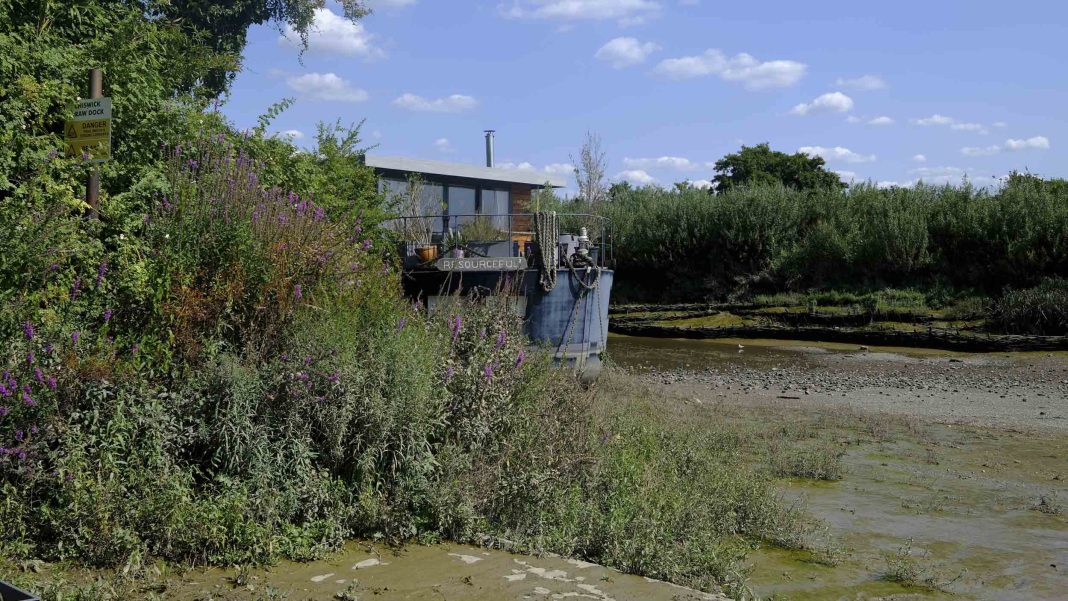
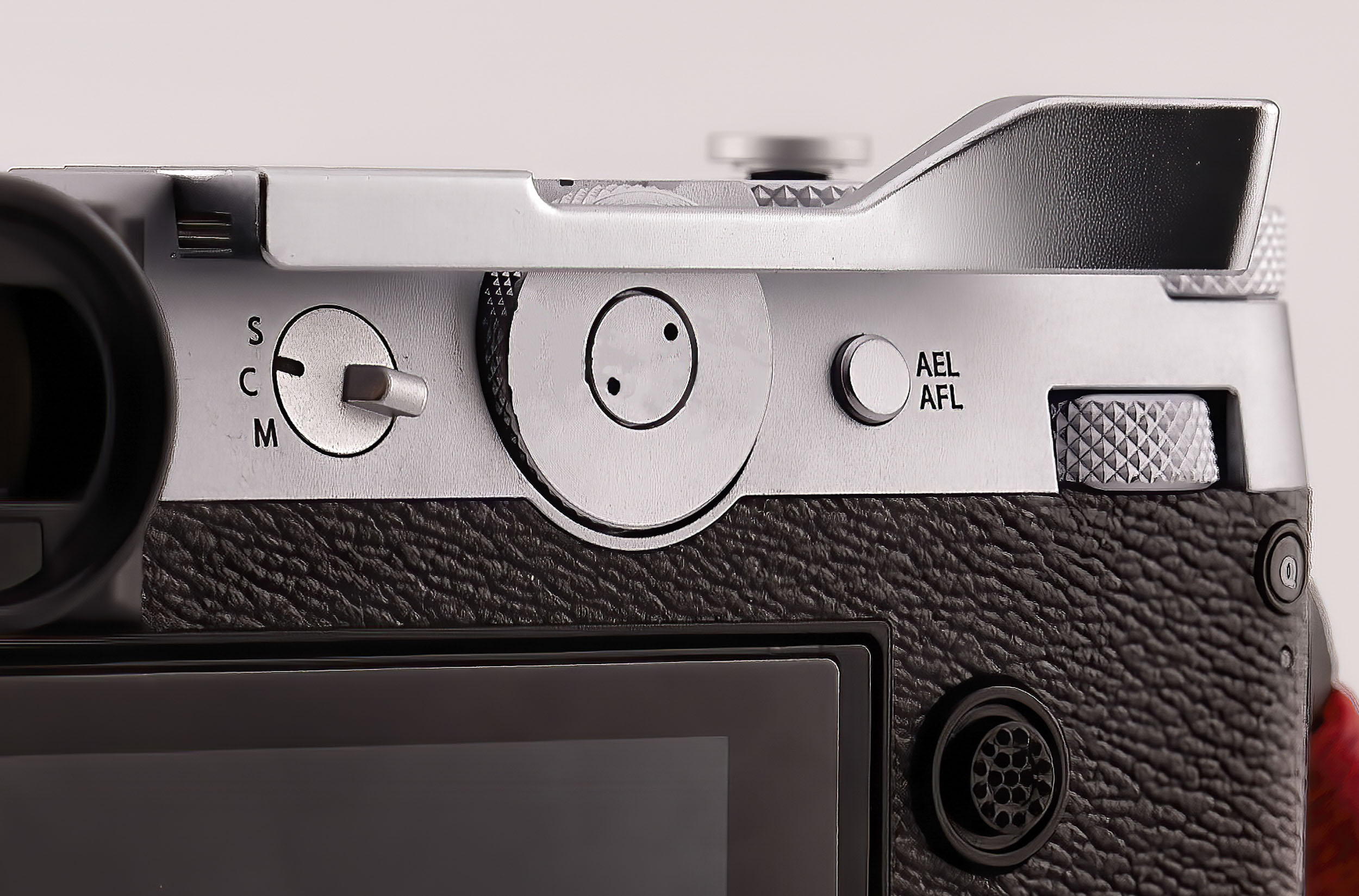
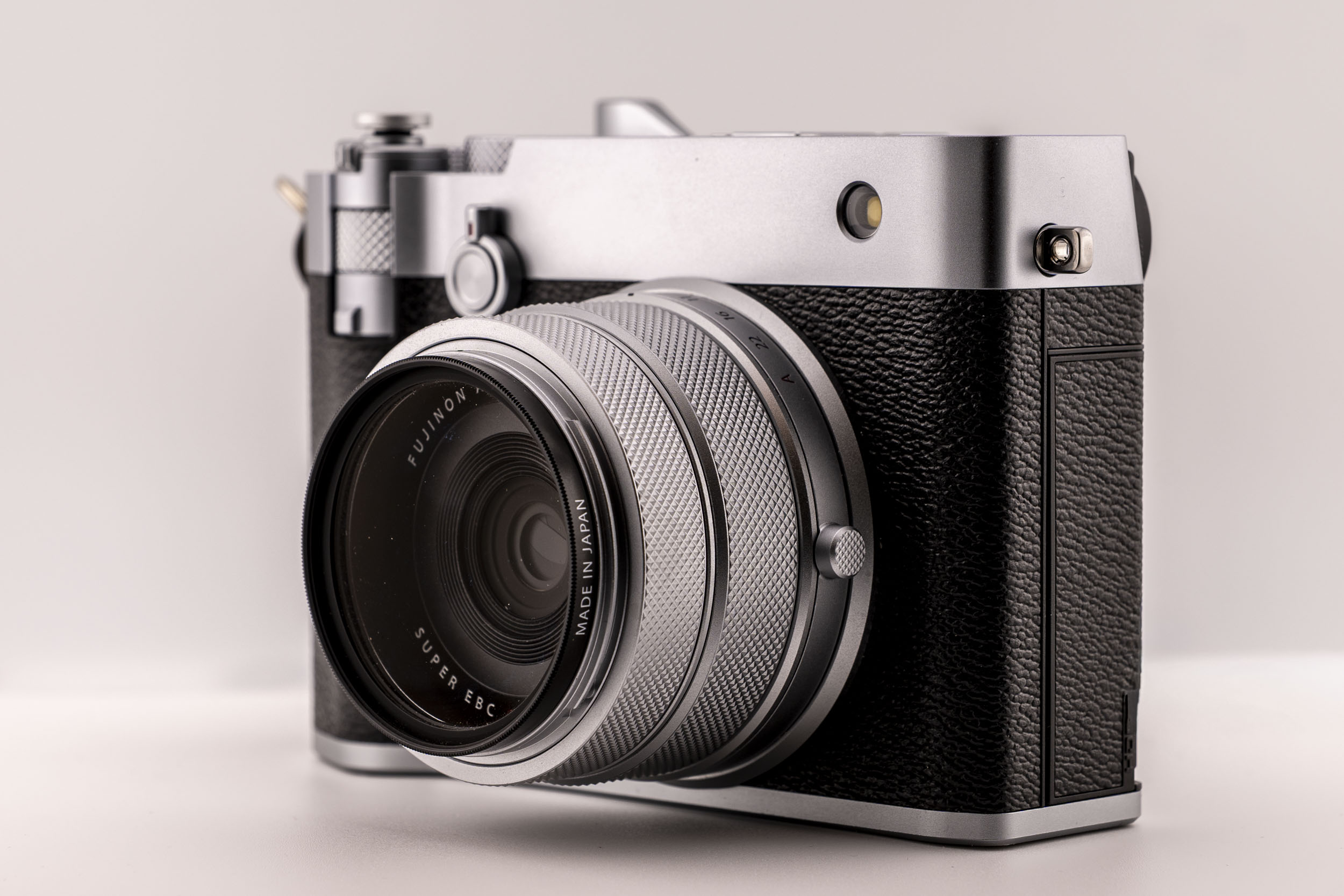
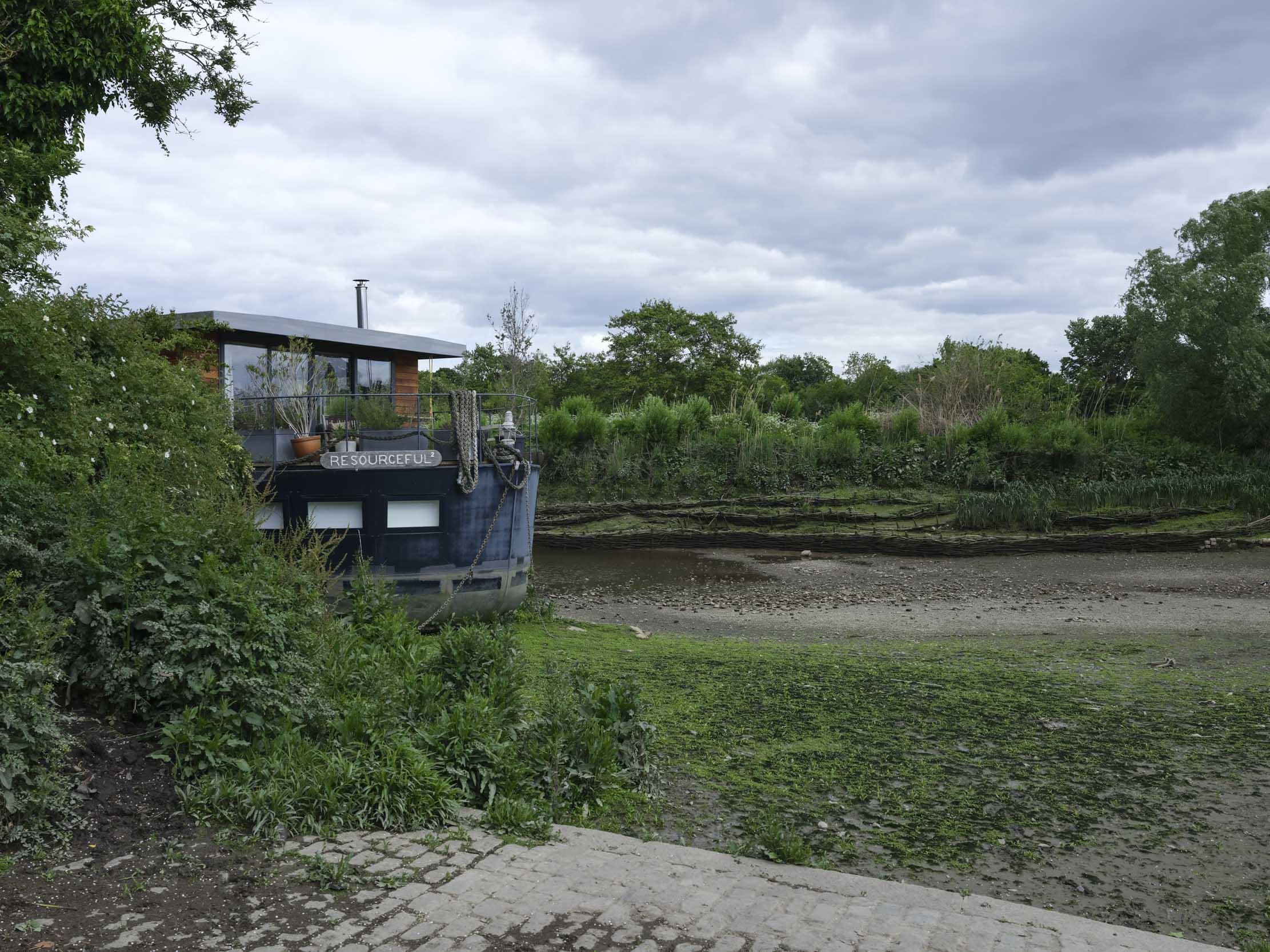
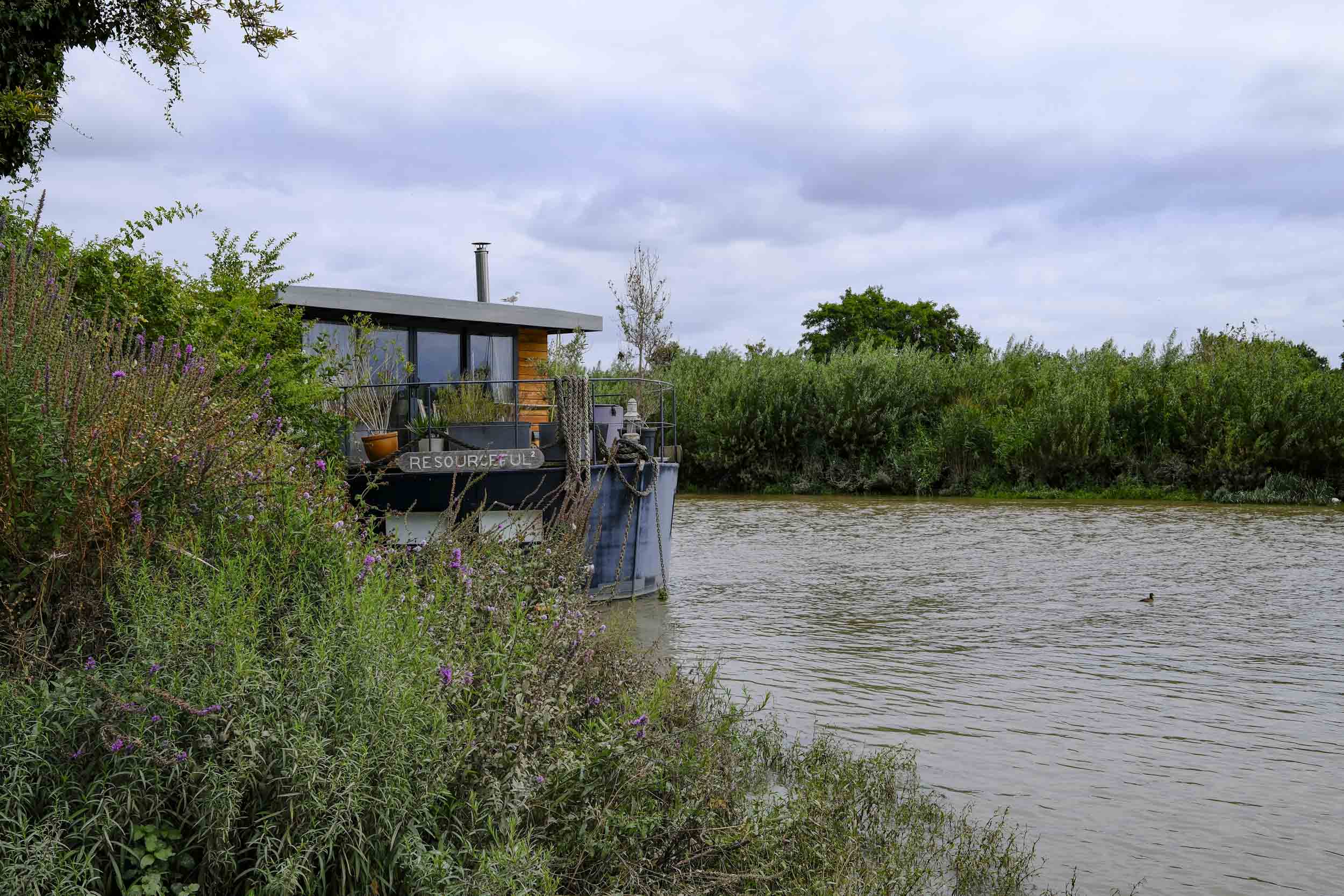
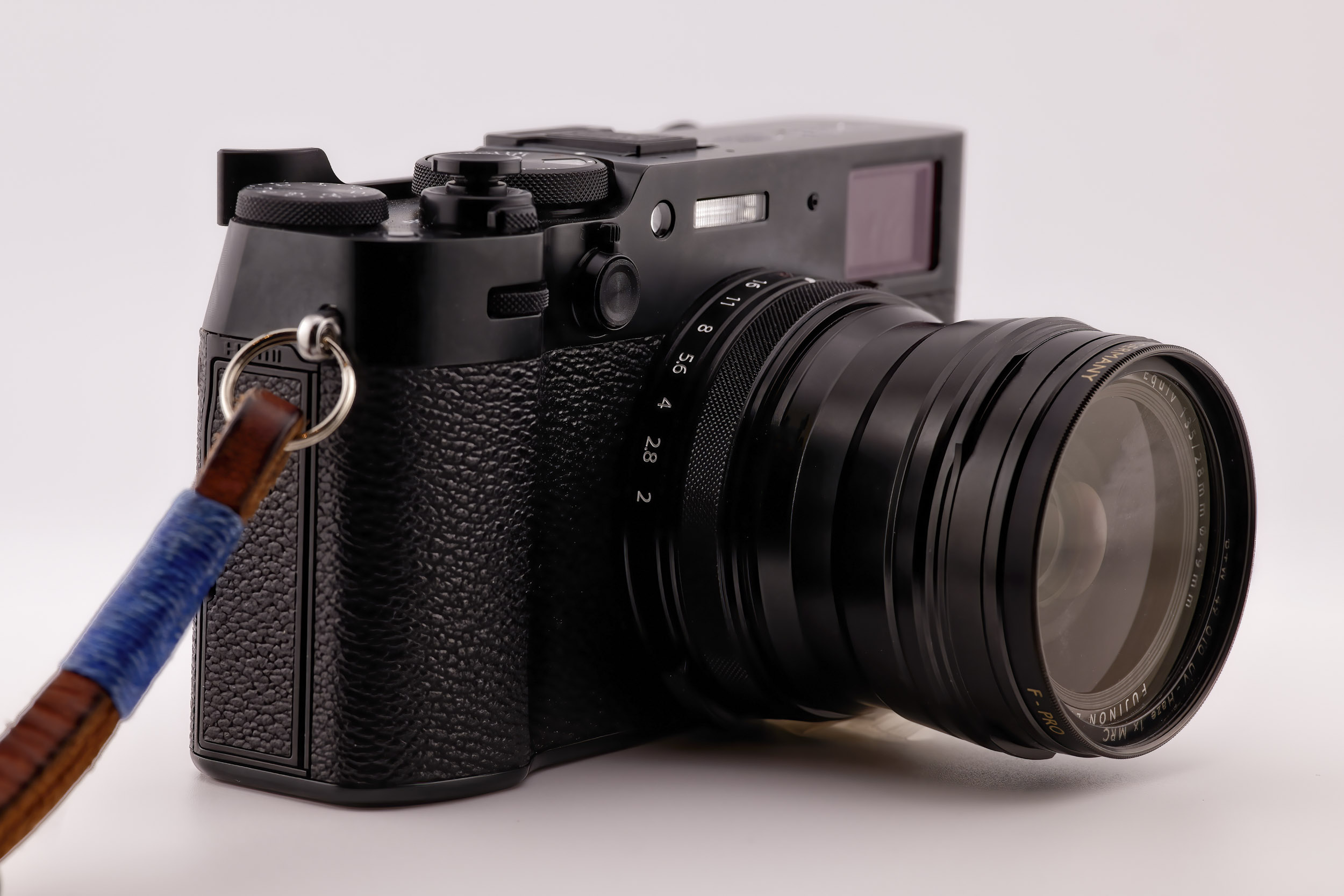

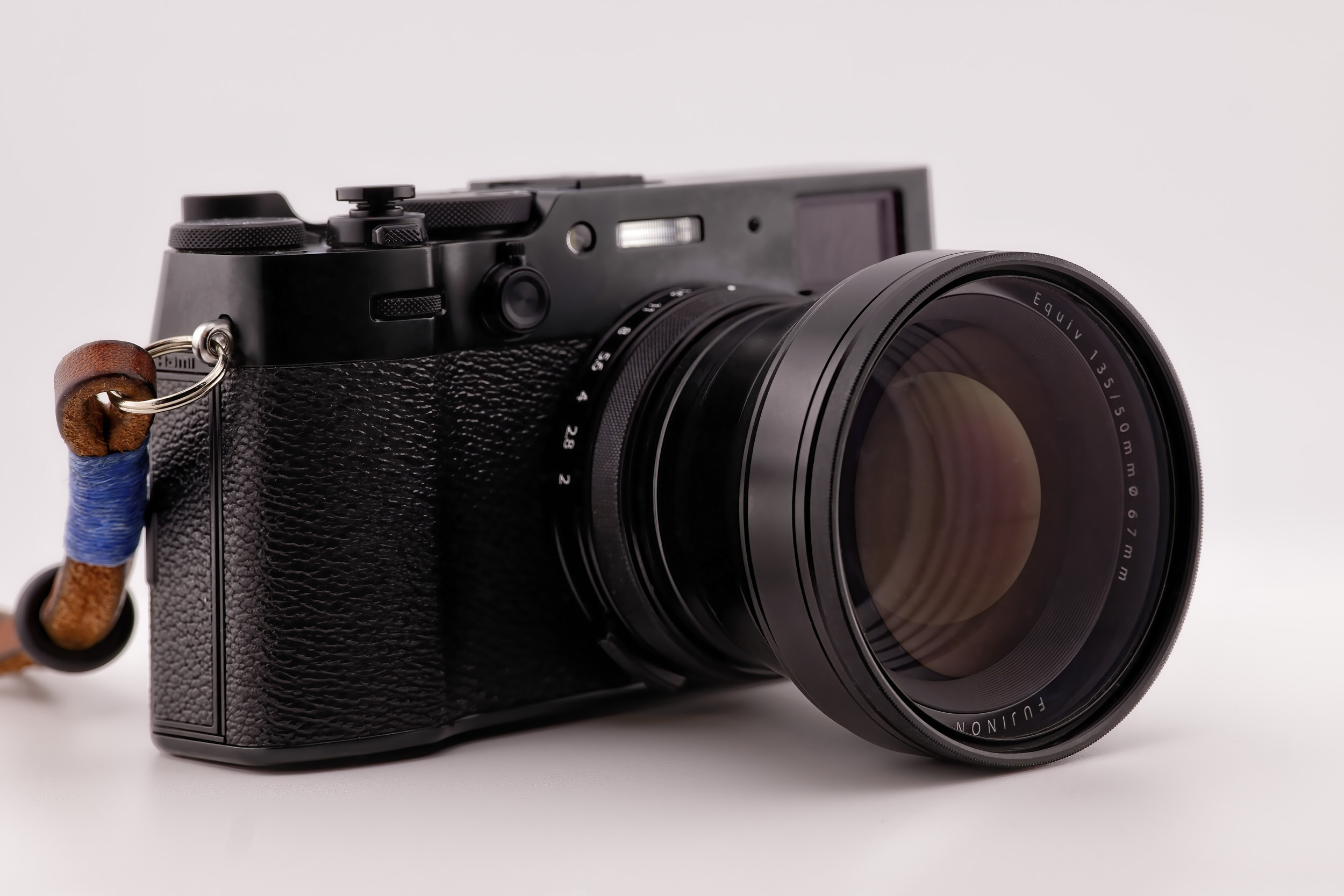
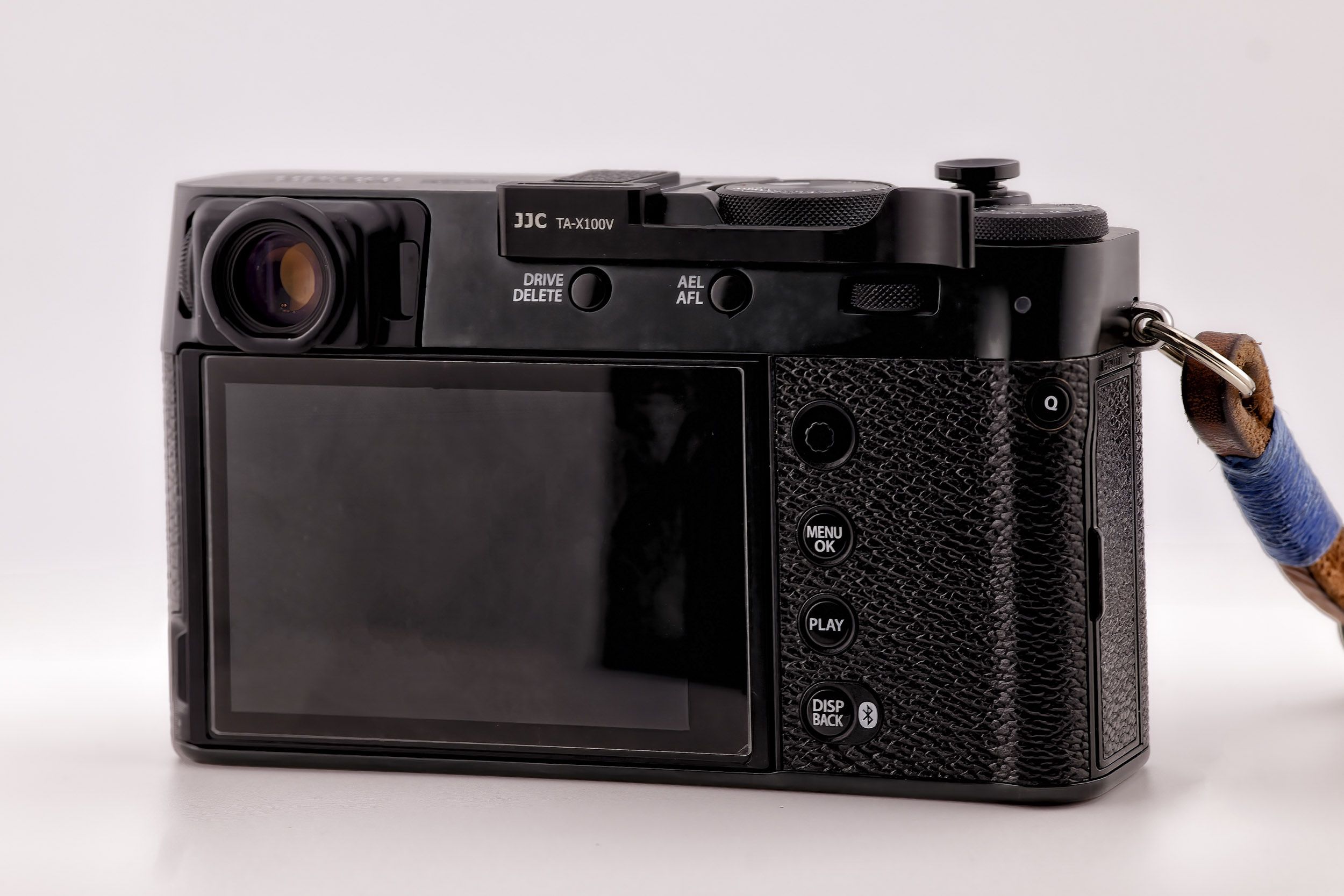
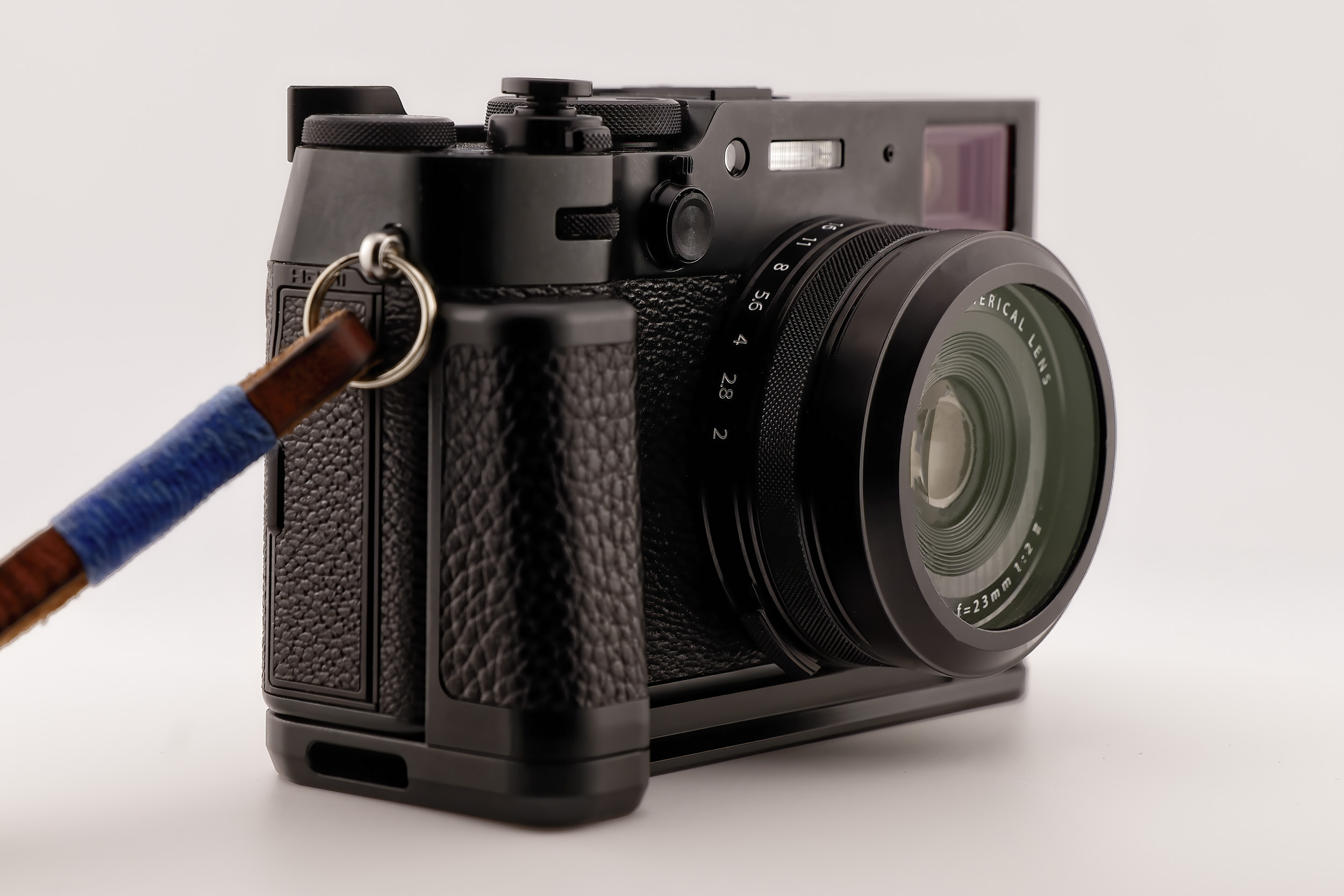
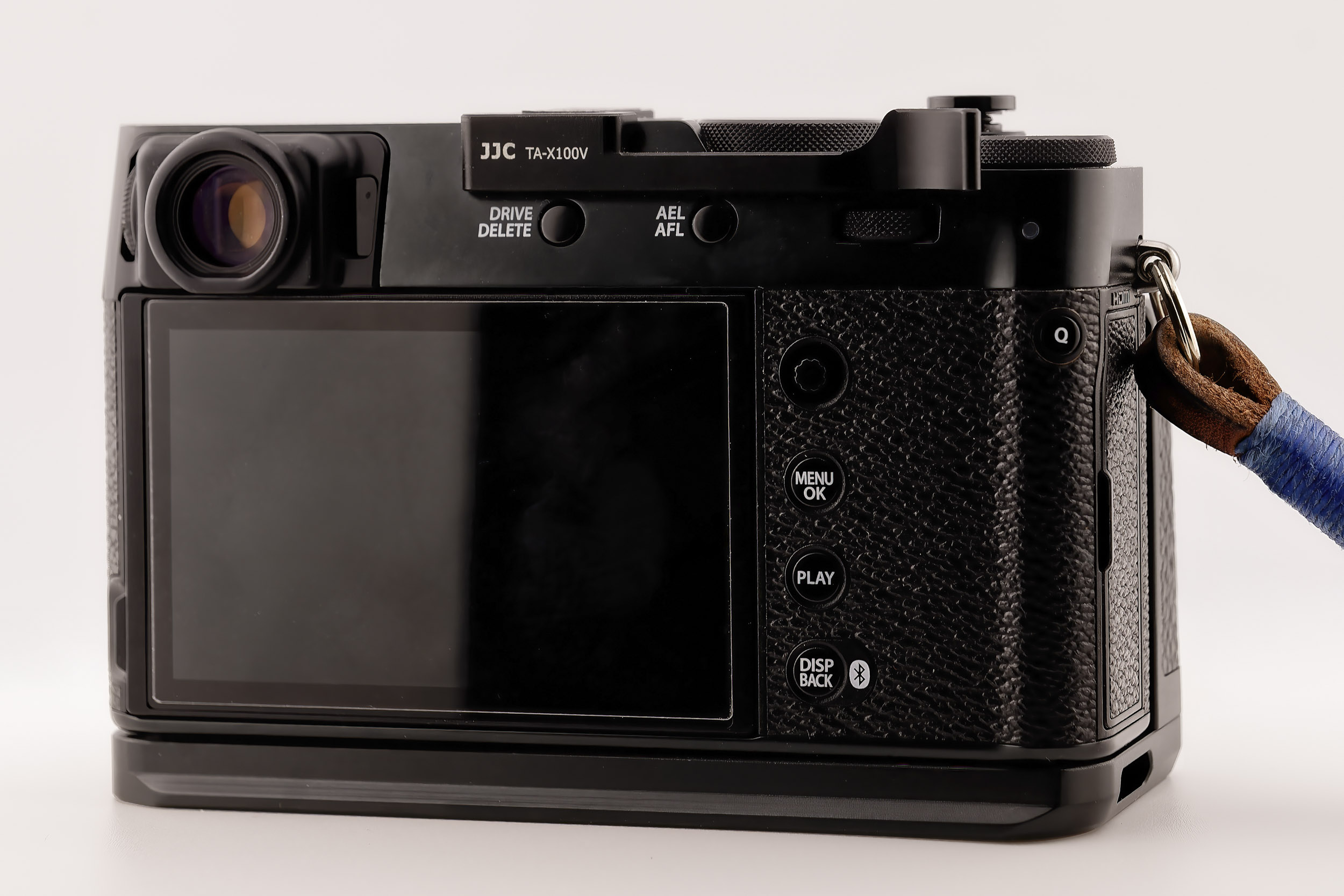
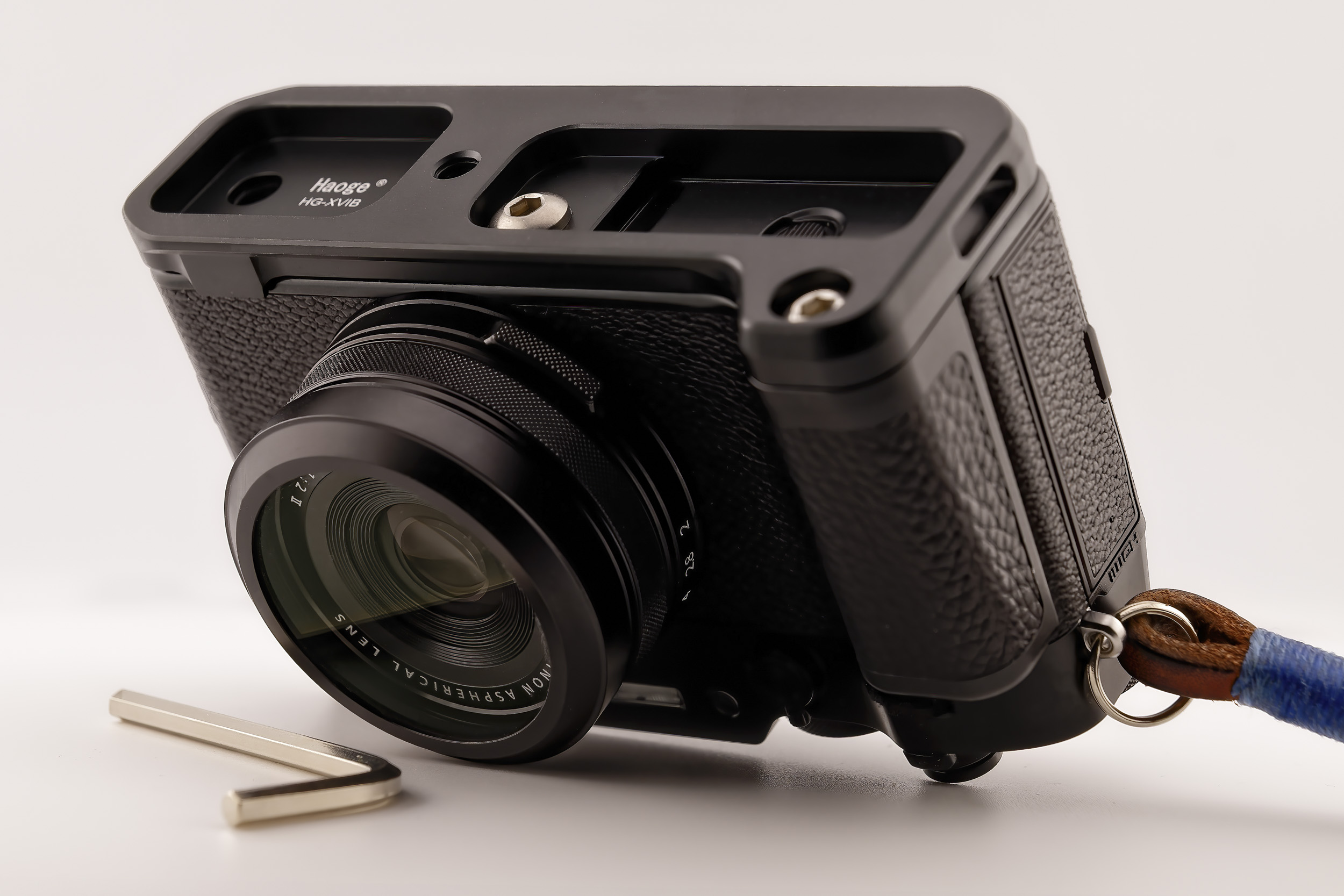
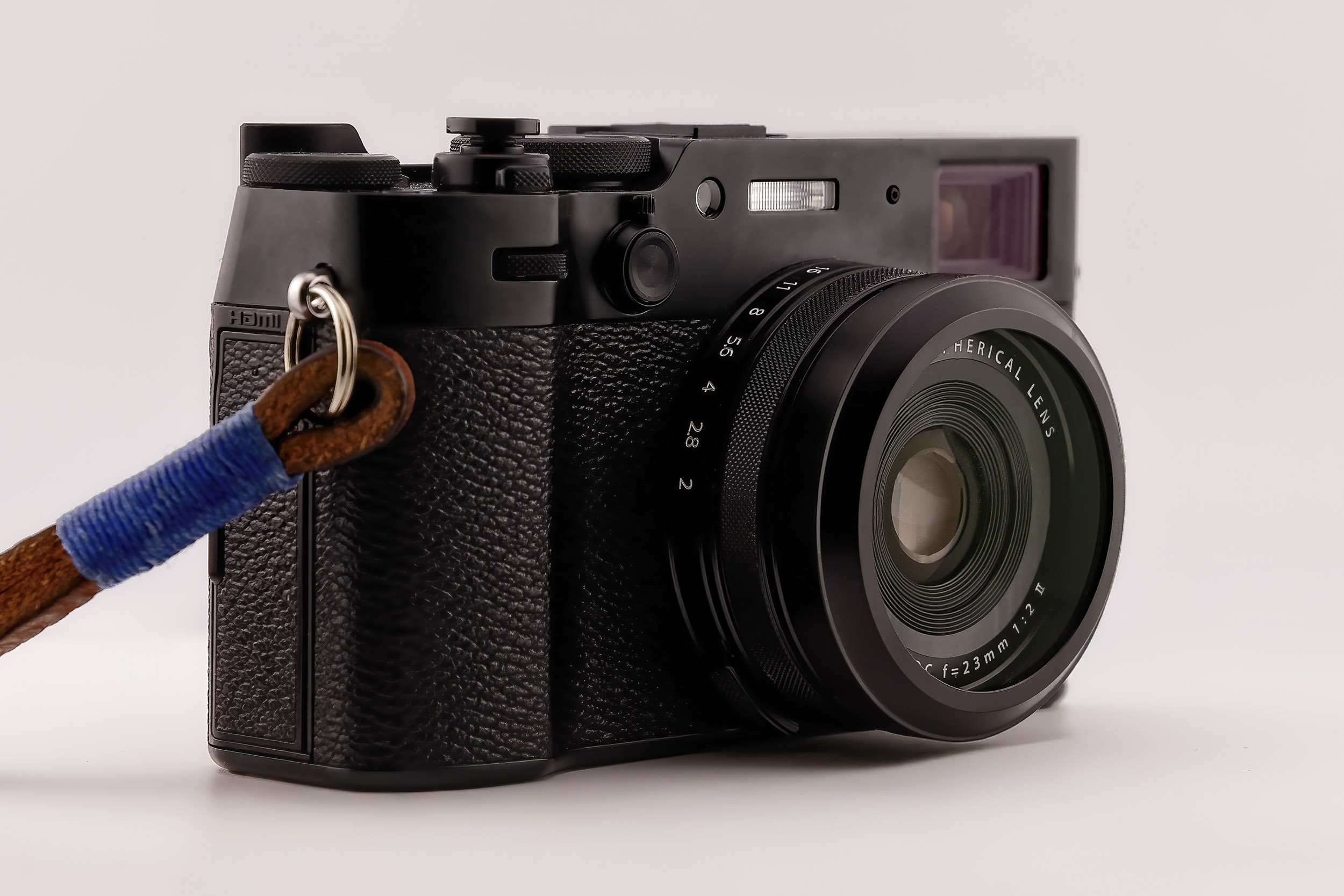
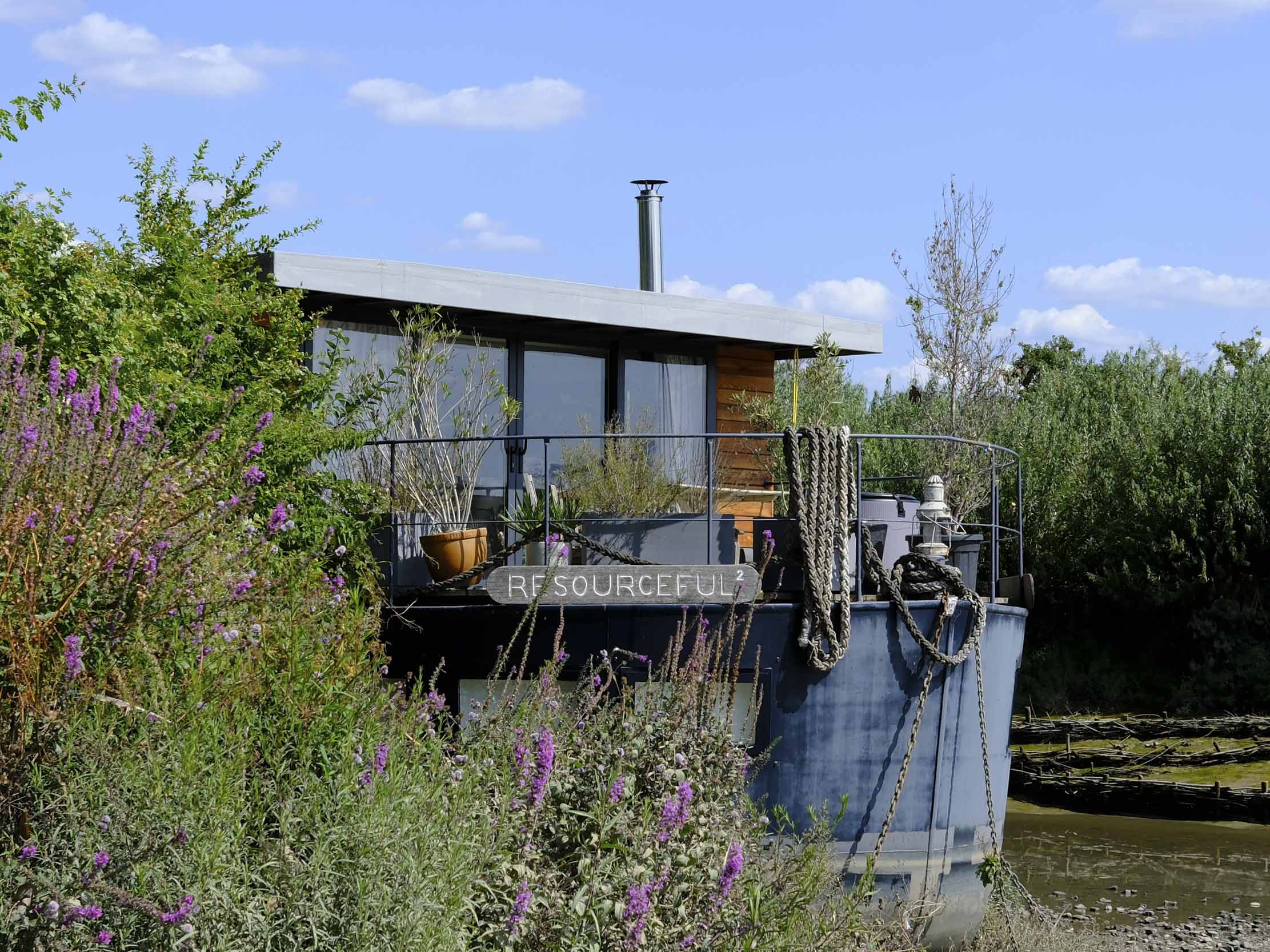
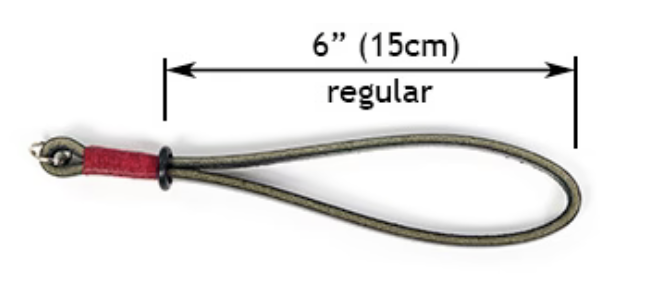
I loved my pimped up 100XVI but sold it for a nice profit 😁. I have replaced it with the equally gorgeous 100RF which arrived yesterday. It now has a thumb grip and soft release installed. I am waiting for the half case to be delivered. It has incredible build quality- it takes 5 hours to mill the top plate out of a block of aluminum! I seem to remember Leica creating a gorgeous camera with that method 😂. The battery door is the best I have experienced.
I now need to set it up like a film camera with little AI so I am in charge of my images. I have sold off my entire camera system except for 3 items that I have to list.
This will be my last camera and I have a wonderful carbon monopod with a RRS ball head.
It feels wonderful in my hand
I look forward to seeing your review of the RF. do tell me if I got anything wrong in the Macfilos test.
I had the WCL and TCL for my X100V. I sold the TCL pretty much immediately as I found it rather cumbersome and could digitally zoom to 50mm anyway. Yes, some pixels are lost but a good composition will work anyway.
The WCL was attractive and I kept hold of it for some time. Unlike the TCL, you can’t “uncrop” the sensor as you say in your article, which makes the WCL actually very useful. As long as you can remember to take it with you. For me, it became just another thing to carry.
In the end, the Q3 made an entry, with a massive sensor and loads of croppability, starting at 28mm, all in one package. Which is OK if you have the cash. Otherwise, the X100VI + WCL is a really good option.
Also the thumbgrip and grip look like really good additions. They can transform the handling and ease of use.
So far, I have used the WCL a few times, but have not used the TCL. Perhaps I will reach the same conclusions as you did.
Apologies in advance, as this is terribly off-topic.
But — amongst the Ricoh GR’s, various M’s and Q’s, several kinds of Fuji’s: do you ever get disoriented? As in ‘This button here — what exactly is this supposed to do?”
Sometimes I think longingly of the M8….
Yes, I do. I get confused. But I think using many cameras is educational and essential when discussing pros and cons. But there is a strong “Jack of all trades” underlay!